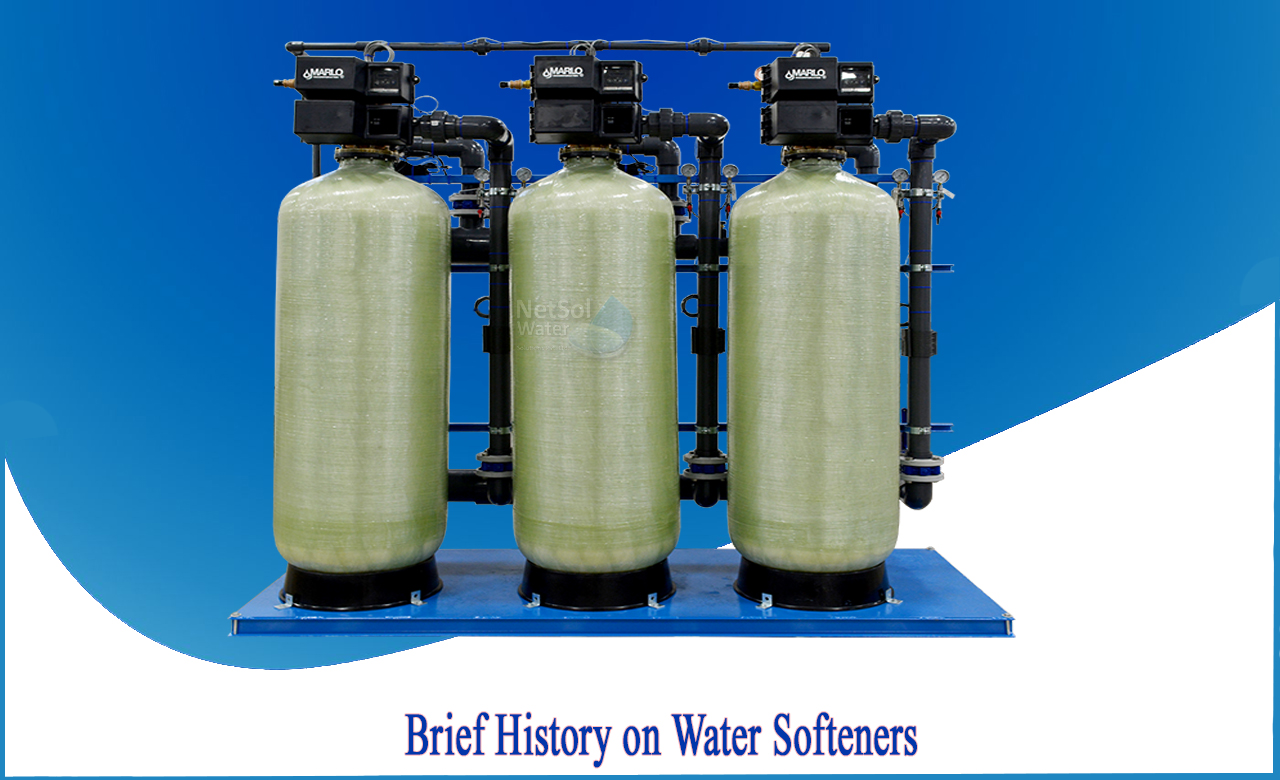History on Water Softener.
Water treatment, or the removal of impurities from water supplies, has a long and fascinating history dating back to ancient times. It may sound a little bold to say, but we at NETSOL Water Softeners like to think that our pioneering technology in home water softeners is a part of that long history.
1500 B.C: Ancient Egypt, 1500 B.C. The Egyptians invented coagulation, a method of removing solid sedimentation from water by using additional chemicals. This early attempt to purify water is depicted on the walls of King Amenophis II and Ramses II's tombs.
500 B.C.: Sanskrit was invented around 500 BC. The SushrataSamhita was one of Ancient India's three most important medical texts. It is thought to have been written by Sushrata, an early Physician, and it describes several methods for purifying water, including filtering water through sand and gravel and boiling water with heat from the sun.
460-470 BC: The Four Humours of Ancient Greece Hippocrates identified the four humours of the body, which were thought to be associated with chemicals in the body. Sanguine (sociable and pleasure seeking – Blood), Choleric (ambitious and leading – Yellow Bile), Melancholic (introverted and quiet – Black Bile), and Phlegmatic (calm and controlled – Phlegm) are the four elements. This led to the belief that the optimal balance of these bodily fluids would provide the body with the best possible state of health. This resulted in the pursuit of purifying water, which is an essential component of each of these humours. The Hippocratic Sleeve was a cloth flask that functioned as a crude water filter.
300-200 B.C.: Aqueducts were invented between 300 and 200 BC during the Roman period. The aqueduct was invented by the Romans as a means of directing water to urban areas. It took 500 years to construct 400 kilometres of aqueducts in Rome. When finished, they provided over one million cubic metres of water to Rome. Archimedes, a Greek engineer, invented the water screw to transport water from low-lying areas to higher-lying areas.
500-1500 AD: The Dark Ages lasted from 500 to 1500 AD. Water treatment and sanitation, as well as scientific progress and general civilizational standards, suffered greatly after the fall of Rome. For over 1000 years, little to no scientific progress was made in the field.
1627: Sir Francis Bacon was born in 1627. Sir Francis Bacon investigated the removal of salt from seawater, believing that sand could be a potential agent for achieving this effect. He was mostly wrong, but his experiments did pave the way for future filtration developments.
1670:Microscopy was invented. Microscopy was invented by Antoine van Leeuwenhoek and Robert Hooke as a new scientific technique. This provided new insight into the composition of water. For the first time, Van Leeuwenhoek was able to observe microorganisms.
1840:The municipal water treatment plant of Robert Thom Robert Thom established the first municipal water treatment plant in Scotland, based on sand filtration and delivered by horse and cart. The first water pipes were gradually constructed. The idea began to spread that everyone should have the right to safe drinking water.
1854:Cholera pandemic- A cholera outbreak was found to be less severe in areas where sand filtration was used. It was eventually discovered that the outbreak was caused by sewer water contaminating the water pumps. John Snow, a British scientist, discovered that adding chlorine to water would act as a disinfectant.
1855: The Water Act of the Metropolis For the first time, a set of regulations was applied to London's water supply, ensuring that a clean and healthy supply was distributed to the capital via a closely monitored filtration process. Similar types of legislation began to spread around the world.
1903: Softening of Water and ion exchange were developed as a result of research into the mineral content of water supplies. This method used sodium to remove the mineral content of water, resulting in a softer solution that has a number of advantages in hard water areas. This process was eventually carried out by large cylindrical units made famous by Permutit.
1950: Domestic water softeners were introduced. Water softeners shrank in size, relying on an electrical timer and having the ability to regenerate themselves.
1995: Block salt has been introduced. For the ion exchange process, water softeners have traditionally required a supply of salt. Solid block salt was created to make it easier to keep home water softeners topped up.
This led to the development in the field of water softeners. Today, there are advancements in technology as well as ease of construction and maintenance.




